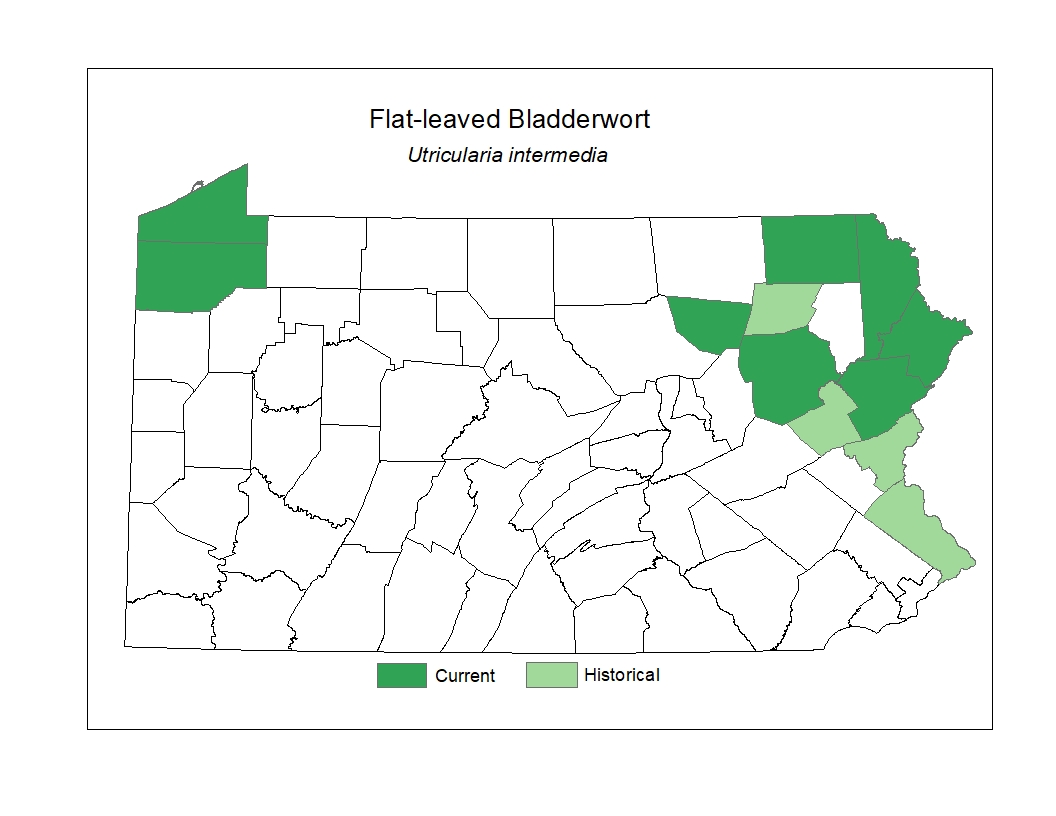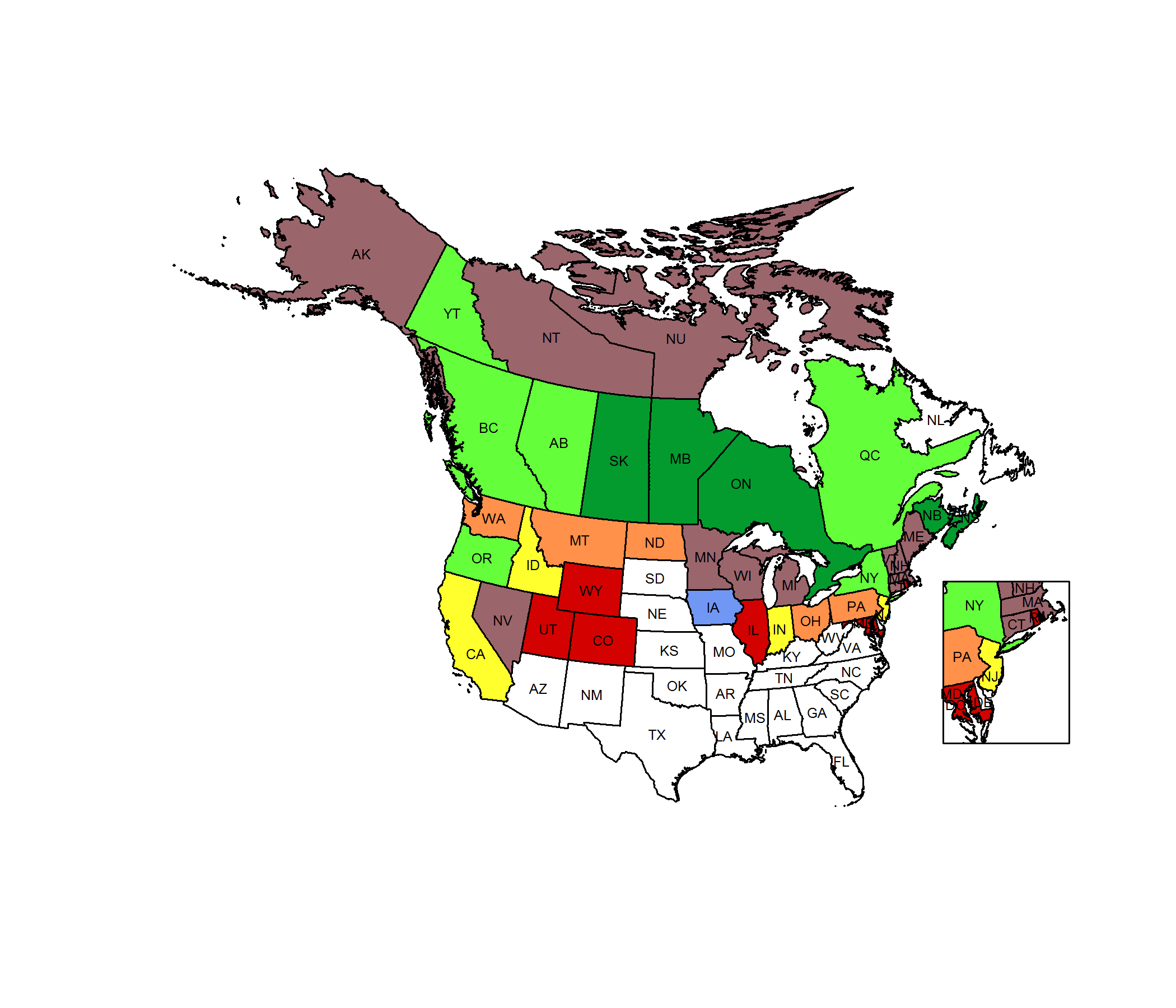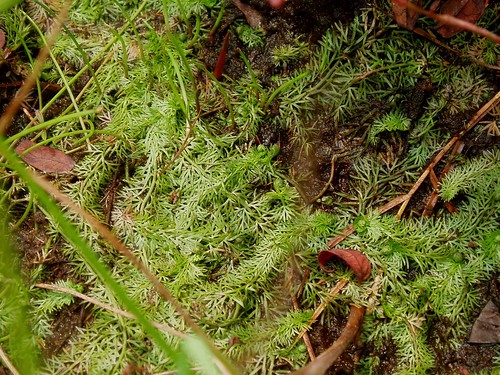 Species Factsheets
Species Factsheets
Utricularia intermedia
Flat-leaved Bladderwort
State Status: Pennsylvania Threatened (PT)
PBS Status: Pennsylvania Threatened (PT)
Federal Status:
Global Rank: G5
![]() rank interpretation
rank interpretation
State Rank: S2
Description
Bladderworts are herbaceous carnivorous plants, mostly aquatic, that have small bladders, usually attached to their finely divided leaves, which trap and digest tiny animals. Flat-leaved Bladderwort differs from most of its relatives in that it produces leafy creeping and prostrate stems on exposed peat, and that the leaves, although divided into narrow and forking segments, are wide enough to have an obviously flattened surface and have minute teeth along their margins. Also unlike most bladderworts, this species has the bladders not attached directly to the leaves but located on specialized leafless stems that branch off the leafy stems and that may grow to 15 cm in length. The yellow flowers, appearing from July to August, number from 1 to 4 and are alternately arranged on an erect stalk. Each individual flower has a two-lipped appearance, with the 8-11 mm lower lip about twice as long as the upper lip. The lower lip also has a spur-like projection at the rear.
Rank Justification
Imperiled in the nation or state because of rarity due to very restricted range, very few populations (often 20 or fewer), steep declines, or other factors making it very vulnerable to extirpation from the nation or state.
Habitat
The species grows on exposed peat in bogs, boggy wetlands, floating bog mat islands, and shorelines.
Survey Dates
Flowers July - August
Distribution
Flat-leaved Bladderwort has a transcontinental range across the cooler regions of North America. In Pennsylvania, this species has been documented historically mostly in the northern, especially the glaciated northeastern, counties.

Management
The viability of populations of Flat-leaved Bladderwort and its habitat may be enhanced by creating buffers and protecting the natural hydrology around wetlands and controlling invasive species. This plant is often an indicator species for bog habitats that feature various orchids, carnivorous plants such as sundew, bladderwort, and pitcher plant, and other interesting species.
Conservation Status Map


NatureServe. 2017. NatureServe Explorer: An online encyclopedia of life [web application]. Version 7.1. NatureServe, Arlington, Virginia. Available https://explorer.natureserve.org.
- NatureServe. 2018. NatureServe Explorer: An online encyclopedia of life [web application]. Version 7.1. NatureServe, Arlington, Virginia. Available at https://www.natureserve.org/explorer
- Pennsylvania Natural Heritage Program. 2018.
- Rhoads, A.F. and W.M. Klein, Jr. 1993. The Vascular Flora of Pennsylvania. American Philosophical Society, Philadelphia, Pennsylvania. Rhoads, A.F. and T.A. Block.
- 2007. The Plants of Pennsylvania: An Illustrated Manual. 2nd edition. University of Pennsylvania Press, Philadelphia, Pennsylvania.







